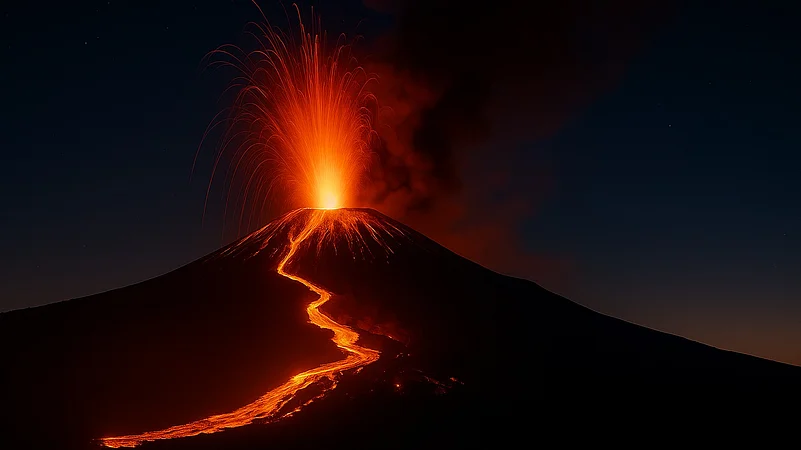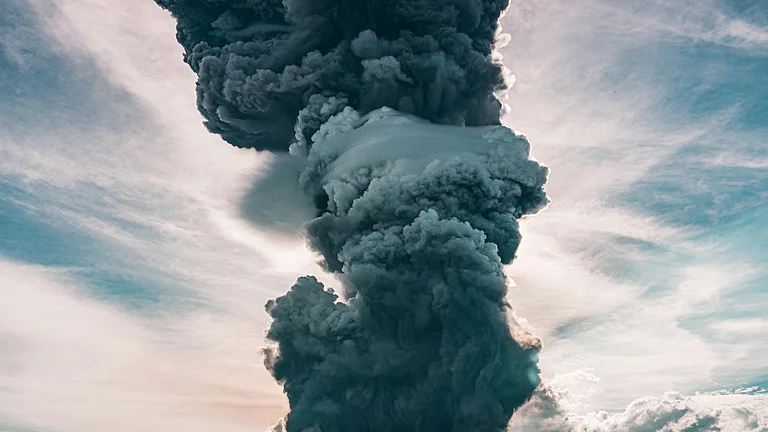Europe’s tallest volcano, Mount Etna in Italy, erupted on June 2, sending high temperature gases, ash and rock “several kilometers high”, according to CNN.
This prompted long lines of tourists to rush downhill away from the eruption site. No casualties or injuries were reported. Sicily’s President, Renato Schifani, said that lava flows emitted in the eruption had not passed the natural containment area, “and posed no danger to the population”, according to Associated Press.
The eruption caused a temporary alert at Catania Airport, one of Sicily’s busiest, with flights largely unaffected, reported Moneycontrol. Officials later confirmed that the ash cloud had dissipated by the afternoon.
The event was captured in video and photos that went viral on social media. Tremors from the eruption were widely felt in the towns and villages on Mount Etna’s flanks, Italian media reported.
Sicily’s Iconic Natural Force
Europe's most active volcano, standing at roughly 3,300 meters, Mount Etna is a towering icon of Sicily and draws over 1.5 million visitors each year.
The volcano’s eruptive history of volcano can be traced back 500,000-years and at least 2,700 years of this activity has been recorded, according to UNESCO, a United Nations Educational, Scientific and Cultural Organization (UNESCO) which declared Mount Etna as a World Heritage Site in 2013.
Eruptions can occur multiple times a year, and sometimes even multiple times within a month. Regarded as one of the most active volcanoes in the world, the vocano last erupted on July 4, 2024 forcing the closure of Catania Airport due to the resultant volcanic ash in the air. The eruption sent a cloud of ash 9.5 kilometers into the sky, reported ET.
According to reports, this was the most intense display of volcanic activity since 2014, making it a rare and memorable sight.
As cited by SkyNews, The Volcanic Ash Advisory Centre Toulouse has issued a "code red" aviation warning, advising planes that a significant volume of ash in the atmosphere is likely.































